Taxila is a world heritage and an important archaeological site in Pakistan containing the ruins of the Gandhara city of Takshashila. Taxila is situated 40 km to the west of Islamabad Capital Territory and northwest of Rawalpindi in Punjab (Pakistan) just off the GT Road.
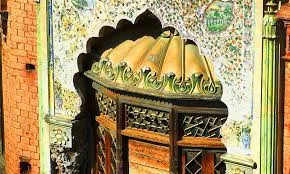
It serves the views of the mountains of Hazara and Murree from the Northeast direction. The area of Taxila is surrounded by several small mountains, forming a natural barrier. The rivers and streams that flow from River Haro provide irrigation to the valley. These streams and rivers were once essential for fertilizing the land, and Taxila was known for its abundant water supply.
The prehistoric mound of Sarai Kala is the oldest settlement of Taxila. It provides evidence of Neolithic, Bronze Age, and Iron Age occupation. The Bhir mound is the oldest historic city of Taxila, and it was most likely established in the 6th century BC by the Achaemenians.
HISTORY OF TAXILA
Early settlement
The region surrounding Taxila was inhabited during the Neolithic era, with some ruins dating back to 1000 BC. Ruins from the Early Harappan period, around 1300 BC, have also been discovered in the area. Although the region was eventually deserted after the collapse of the Indus Valley civilization.
The earliest evidence of settled occupation in the Taxila Valley was discovered at Sarai Khola, located 2 km southwest of the Taxila Museum. Three radiocarbon dates from Period I suggest that the site was first occupied between the late 4th and early 3rd millennium BC. Deposits of polished stone celts, chert blades, and a distinct type of highly burnished pottery were found at this site. The pottery shows clear signs of the use of woven baskets in the manufacturing process and the application of a slurry to the exterior surface.
It appears that Period I and Period II at Sarai khola followed the same pattern as Period I. However, the quantities of Kot Diji-type wares were much higher than the others. The Kot Diji forms show evidences of wheel-throwing, which is a straight technological difference from Period I material and Seven radiocarbon dates have been taken from the early and late Period II / Kot Diji. so , it look like that this phase dates back to the mid-late third to early 2nd millennia BC.
KING SIKANDAR ERA

The Greek historian Arrian writes, that in 326 BC, when King Sikandar arrived in Taxila, he found it a prosperous, large, and densely populated city. Afterward, Hiuen Tsang, a famous Chinese traveler, arrived in Taxila in 629 AD. He described it as a big and prosperous city. He mentioned the fertilized land, abundant water, and vibrant crops. He also mentioned the richness of the Taxila Valley and the beauty of this city which is discussed in the holy books of Hinduism “Ramayan” and “Maha Baharat” as well. In the Sanskrit language, Taxila is named Takshashila.
CYRUS ERA
In the ancient Pali language and the history of Ceylon Taxila was known as “Takshasila”. In the early 6th century AD, under Cyrus’s rule, the Achaemenid dynasty of Iran bordered Greece on one side and the Indus Valley in Pakistan on the other.
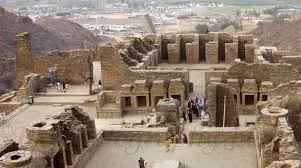
India was dominated by Iran which was called Gandhara, which means the City of Fragrances. When Sikandar entered the Taxila region, it was under the king of Iran, Dara 1. Raja Ambhi was the ruler of that time, and his castle was in “City Bhir”.
After Sikandar many Mughals ruled this place. One of them is Moria who accepted Buddhism and spread it in the the kingdom and played an important role in preaching Buddhism.
The structural remains of Taxila include temples and forts. Charsada and Sheela were the capital of Gandhara kingdom at that time. Gandhara was attacked by the people of surrounding areas on their horses and left them with nothing in their hands. They destroyed and burned the religious places, homes and the people of Gandhara were left with no choice but to leave their homeland to save their lives and the Attock city was deserted for years.
In 1975, an expert archaeologist and British geographer Alexander wrote a detailed survey of the ancient land of Sindh and Pakistan and Taxila’s ruins.
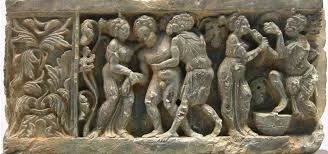
During Alexander the Great’s victorious arrival in Taxila, Bihr was a significant location. Sirkap, a fortified city established in the mid-2nd century BC. It boasts numerous private residences, stupas, and temples arranged in accordance with the Hellenistic grid system. This layout clearly demonstrates the profound influence of Western classical architecture on local design.
Indo-Sani
In 1912, a British Archaeologist Sir John Marshal started the process of excavation of Taxila city and it ended in 1934. At the beginning of this process, some artifacts of ancient cities were discovered, in which Bhir city was one of them. In the second BC, the Bactrian Greeks settled the city in the Greek style with a certain planning. They lasted until the Indo-Sani and Parthai times. After a while, this city was destroyed in an earthquake.
THE RUINS
The ruins of four settlement sites located at Taxila provide insight into the pattern of urban development on the Indian subcontinent spanning over five centuries. One of these sites, the Bihr mound, holds historical significance as it is associated with Alexander the Great’s triumphant entry into Taxila. Together, the archaeological sites of Saraikala, Bhir, Sirkap, and Sirsukh are of exceptional importance in highlighting the evolution of urban settlement on the Indian subcontinent.
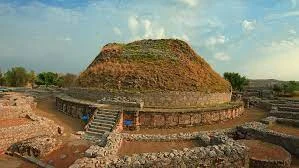
Scholars in the 19th century identified the locations of various important cities mentioned in ancient Indian texts. However, they faced difficulty in identifying the lost city of Taxila until 1863-64. This was because the distances recorded by Pliny in his Naturalis Historia were incorrect and pointed towards a location on the Haro River.
Alexander Cunningham, the founder and the first director-general of the Archaeological Survey of India, observed that this position did not match the descriptions provided in the itineraries of Chinese pilgrims, especially that of Xuanzang, the 7th-century Buddhist monk. Unlike Pliny, these sources stated that the journey from the Indus to Taxila took three days, not two. Cunningham’s subsequent explorations in 1863-64 of a site at Shah-Dheri convinced him that his hypothesis was correct.
The Taxila archaeological complex is considered to be authentic in terms of its forms, designs, materials, substance, locations, and settings. It is being preserved and maintained to protect its authenticity from any changes. Conservation plans are being made with special attention to maintaining original designs, traditions, techniques, locations, and settings, following international principles.
King Ashok
On the other hand, in other cities, many stupas, mandirs, monasteries, and schools were discovered such as Dharma’s complex, which is the first-ever worship place that was discovered related to Buddhist religion. It was built by King Ashok. The Taxila region is home to several ancient sites, including the Khanpur cave which has produced small stone tools from the Mesolithic era. The area is also dotted with Buddhist monasteries and stupas from various periods. These Buddhist monuments made Taxila a religious hub and a popular destination for pilgrims from as far away as Central Asia and China.
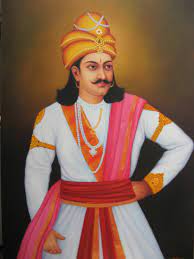
Some of the notable Buddhist archaeological sites in Taxila include the Dharmarajika complex and stupa, the Khader Mohra grouping, the Kalawan grouping, the Giri monasteries, the Kunala stupa and monastery, the Jandial complex, the Lalchack and the Badalpur stupa remains and monasteries, the Mohra Moradu monastic remains, the Pipplian and Jaulian remains, and the Bahalar stupa and remains. Julian’s school is known as the world’s first school of idolatry. This school is located on a high place and encompasses a stupa, monastery, and dargah. The school had renowned teachers, Panini and Maraitha, who taught various subjects including Buddhism, architecture, science, medicine, spirituality, yoga, fine arts, and music.
For many centuries, the mountain stone has been easily accessible in this area. In the past, constructions were made by cutting large stones into bricks to build the walls and strengthen them. Small stones were then placed vertically and covered with lime and clay mortar. This process is called masonry.
During the archaeological excavations, thousands of artifacts have been recovered. These include clay and metal vessels that were used by people, objects that were used in religious rituals, pearls made of semi-precious stones, statues of gods and goddesses, and broken stones of Buddha. Soil and lime are also included, which are now displayed in the Museum of Taxila.
CONCLUSION
Taxila is a collection of eighteen archaeological sites located in the provinces of Punjab and Khyber Pakhtunkhwa in Pakistan and is protected under the Antiquities Act, of 1975. The Constitution (18th Amendment) Act 2010 (Act No. X of 2010) has granted full administrative and financial authority over all heritage sites to the respective provincial governments. The management and protection of Taxila is the responsibility of the Directorate General of Archaeology and Museums of the Provincial Government of Punjab and the Directorate of Archaeology of the Provincial Government of Khyber Pakhtunkhwa. All activities at the site are prepared by the management committee and require approval from a competent forum before implementation.



59 Comments
Olivewidly
маркетплейс для реселлеров покупка аккаунтов
Peterdaw
маркетплейс аккаунтов профиль с подписчиками
RichardTen
перепродажа аккаунтов https://magazin-akkauntov-online.ru/
JamesCledo
купить аккаунт купить аккаунт
Olivewidly
купить аккаунт с прокачкой площадка для продажи аккаунтов
Bryantbeini
купить аккаунт с прокачкой маркетплейс аккаунтов
RichardTen
продажа аккаунтов маркетплейс аккаунтов
DavidNaisk
Account trading platform Account Acquisition
JasonRah
Secure Account Sales Account Exchange Service
MichaelMibra
Account Trading Account Selling Platform
WalterFlact
Account Buying Platform Accounts market
JaredSoals
Accounts for Sale Account Store
BrianCoaps
Accounts marketplace Social media account marketplace
Ronaldhex
Buy accounts Account marketplace
BruceCUBOW
Account Buying Service Account Trading
Williamsep
Gaming account marketplace Account exchange
Ronaldhex
Account trading platform Accounts marketplace
BrandonGuede
buy account ready-made accounts for sale
EdmundDeats
account trading platform guaranteed accounts
RomeoGaH
sell accounts buy accounts
DonaldSab
buy accounts online account store
Keithvet
account buying service profitable account sales
RobertGeasy
account exchange account buying service
Hectorwem
account trading secure account sales
CarlosMar
account trading service website for buying accounts
Richardusero
account buying platform accounts marketplace
Carlosjeape
account exchange service secure account purchasing platform
Stephentraky
secure account purchasing platform ready-made accounts for sale
Stevenslace
account marketplace sell account
Clydedoulp
buy and sell accounts account trading service
JohnnyDot
account selling service account sale
ThomasPouff
marketplace for ready-made accounts accounts-for-sale.org
PhilipDib
marketplace for ready-made accounts account exchange service
RandalOxilt
account buying service purchase ready-made accounts
RichardMouse
profitable account sales accounts for sale
Zacharymax
gaming account marketplace account purchase
Kevinjoipt
account selling platform database of accounts for sale
Thomasnussy
find accounts for sale account selling service
NathanKiz
website for selling accounts account market
BruceObere
sell account discount-accounts.org
Danielnot
ready-made accounts for sale sell account
Jasonvon
sell pre-made account accounts for sale
Geraldmox
account trading platform account exchange service
ThomasBeada
account market account store
accounts-offer.org_Cousy
sell pre-made account https://accounts-offer.org
accounts-marketplace.xyz_Cousy
sell accounts https://accounts-marketplace.xyz/
buy-best-accounts.org_Cousy
buy and sell accounts https://buy-best-accounts.org
social-accounts-marketplaces.live_Cousy
website for buying accounts account market
accounts-marketplace.live_Cousy
account buying platform https://accounts-marketplace.live/
social-accounts-marketplace.xyz_Cousy
account buying platform https://social-accounts-marketplace.xyz
buy-accounts.space_Cousy
account acquisition https://buy-accounts.space/
buy-accounts-shop.pro_Cousy
accounts for sale https://buy-accounts-shop.pro/
buy-accounts.live_Cousy
purchase ready-made accounts https://buy-accounts.live
social-accounts-marketplace.live_Cousy
account store https://social-accounts-marketplace.live
accounts-marketplace.online_Cousy
accounts for sale https://accounts-marketplace.online/
accounts-marketplace-best.pro_Cousy
sell accounts buy accounts
akkaunty-na-prodazhu.pro_Cousy
магазин аккаунтов https://akkaunty-na-prodazhu.pro/
rynok-akkauntov.top_Cousy
купить аккаунт магазины аккаунтов
kupit-akkaunt.xyz_Cousy
купить аккаунт https://kupit-akkaunt.xyz/